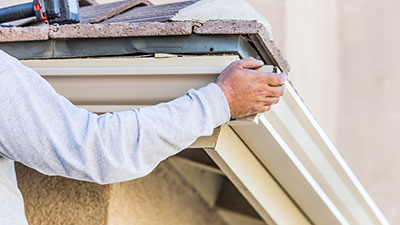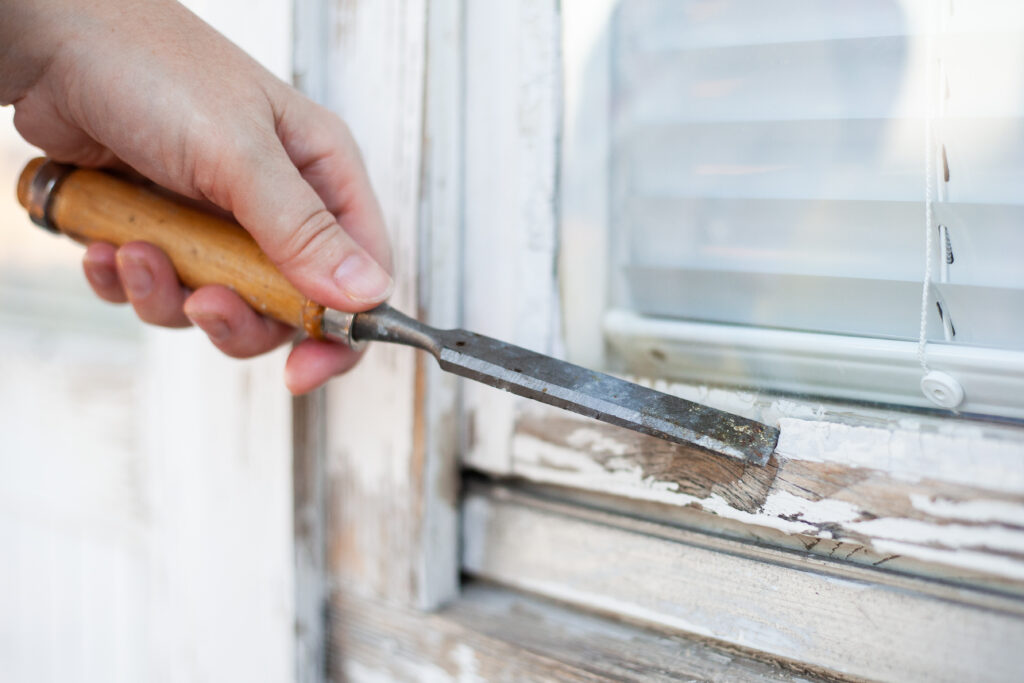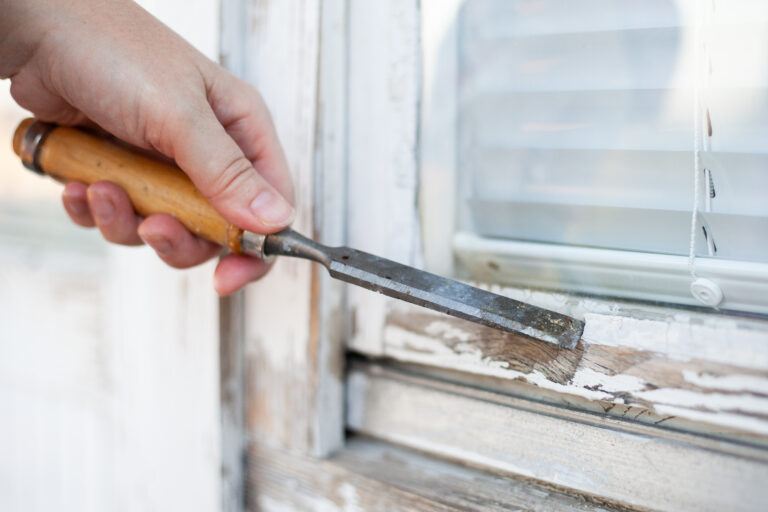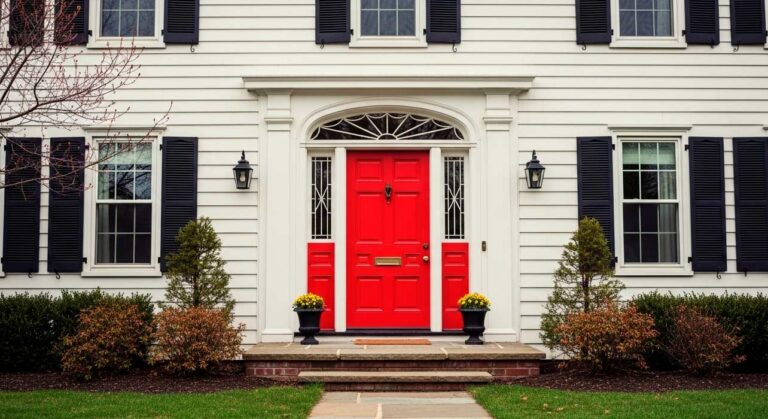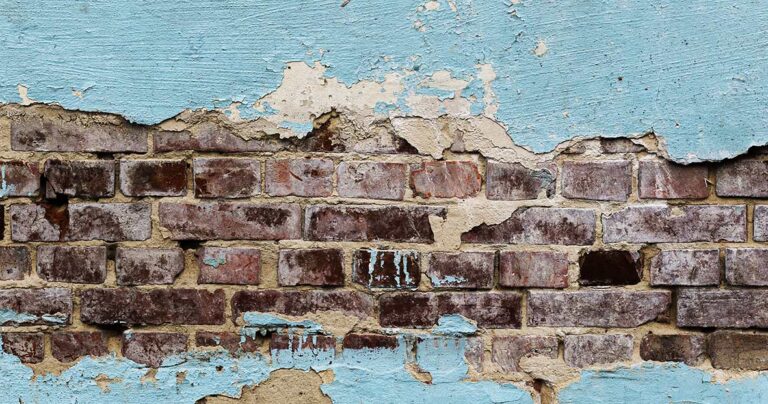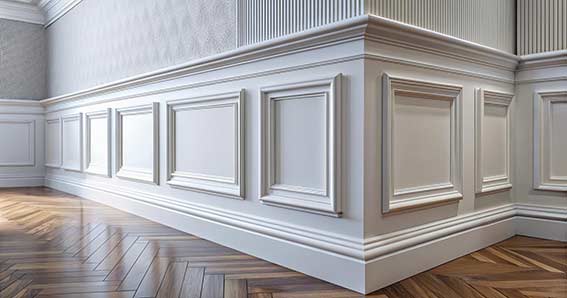Paint splatters on windows are one of the most common mishaps during home improvement projects. Whether you’re refreshing your trim or tackling a full room makeover, dried paint on glass windows can block your view and make your home look unprofessional. The good news is that scraping paint off windows doesn’t require expensive tools or professional help. With the right techniques and a few simple supplies, you can restore your glass to crystal-clear condition.
Key Takeaways
- A sharp razor blade, glass cleaner, and clean cloth are essential for effectively removing paint from glass windows.
- Keep glass surfaces wet during paint from glass removal to prevent scratching and damage.
- Hold your razor blade at a 45-degree angle and push away from yourself in smooth strokes for best results.
- Professional services can handle complex jobs involving multiple paint layers or wood frame restoration.
- Clean your blade frequently and protect window frames and surrounding wood surfaces during the process.
- Fill your toolkit with alternatives like heat guns, vinegar solutions, and plastic scrapers for delicate surfaces.
What You Need for Removing Paint from Glass Windows
Before you start removing paint from your windows, gather these essential tools. You’ll need a sharp razor blade – always use a new one since dull blades require more pressure and can scratch the glass. Get a quality glass cleaner or window cleaner to act as a lubricant. Have a clean rag and soft cloth ready for wiping. Keep warm water nearby for cleaning, and consider adding white vinegar to your toolkit for stubborn spots. These basic supplies will handle most paint removal jobs on glass windows.
Step-by-Step Guide to Scraping Paint Off Windows
Step 1: Clean the Window Surface Start by cleaning your window with warm water and a cloth. Remove any dirt or debris that could scratch the glass during the paint removal process. This initial cleaning makes the remaining steps much easier.
Step 2: Apply Glass Cleaner Spray your glass cleaner generously on the painted areas. Add a few drops of dish soap to the solution for extra lubrication. Let the cleaner soak for a few minutes to soften the paint. Never attempt to scrape dry glass – this will cause scratches.
Step 3: Using a Razor Blade Properly Hold your razor blade at a 45-degree angle to the glass surface. This angle prevents scratching while providing effective paint removal. Push the blade away from you in smooth, controlled strokes. Never pull the razor back toward yourself.
Step 4: Scrape Gently and Systematically Begin scraping at one edge of the paint spot. Work slowly and let the blade do the work. Apply steady, gentle pressure – forcing the blade will scratch the glass. Keep the surface wet with your glass cleaner throughout the process.
Step 5: Wipe Clean and Inspect After removing the paint, wipe the area with a clean cloth. Check for any remaining paint spots and repeat the process if needed. Spray with window cleaner and buff dry for a streak-free finish.
Alternative Methods Without Razor Blades
If you prefer not to use a razor blade, try these safer alternatives. A heat gun can soften paint for easier removal, but use extreme caution – rapid temperature changes can break glass. Apply heat briefly and from a safe distance.
White vinegar heated in the microwave creates an effective paint softener. Mix equal parts vinegar and warm water, apply to the paint, and let it soak before scrubbing with a cloth. This method works well on latex paint.
For delicate surfaces or coated glass, plastic blade scrapers offer a gentler approach. These tools won’t cut you or scratch special window coatings. They work slower than metal blades but provide better control on sensitive surfaces.
Tips to Protect Your Windows and Avoid Damage
Always keep your glass wet during the scraping process to protect against scratches. Maintain the proper blade angle – too steep and you’ll gouge the glass, too shallow and you won’t remove the paint effectively.
Use a spray bottle to keep the work area lubricated. Work in small sections rather than trying to tackle large areas at once. Pay special attention to the window frame and edge areas where paint often accumulates. Clean your blade frequently to prevent paint buildup that could scratch the glass.
When to Call Professional Services
Some paint removal jobs are too complex for DIY methods. Large commercial windows, multiple layers of old paint, or extensive wood frame restoration may require professional expertise. Companies like OnDemand Painters have specialized tools and experience handling challenging paint removal projects safely and efficiently.
Conclusion
Removing paint from windows is a straightforward process when you use the right tools and techniques. Remember to keep your glass wet, use proper blade angles, and work patiently. With these methods, you can restore your windows to their original clarity. For complex projects or if you’re uncomfortable with the process, professional services like OnDemand Painters can ensure the job gets done right without damaging your valuable glass windows.
FAQs
Can I scrape paint off a window without damaging the glass?
Yes, you can safely remove paint by keeping the glass wet, using a sharp razor blade at a 45-degree angle, and applying gentle pressure during the removing paint process.
What is the best tool for removing paint from glass windows?
A new, sharp razor blade combined with glass cleaner provides the most effective method for removing paint from glass surfaces.
How do you get dried paint off window frames?
Use warm water and vinegar solution to soften the paint, then gently scrape with a plastic blade to avoid damaging the wood frame material.
Will WD-40 remove paint from glass?
While WD-40 can help soften paint, glass cleaner or warm soapy water works better and safer for removing paint from glass windows.
Should I use a heat gun when removing paint from windows?
Heat guns can work for removing paint but use extreme caution as rapid temperature changes can break glass surfaces.
What should I do if paint won’t come off after scraping?
Apply more glass cleaner, let it soak longer, or try a heated vinegar solution to further soften stubborn paint before continuing the removing paint process.










